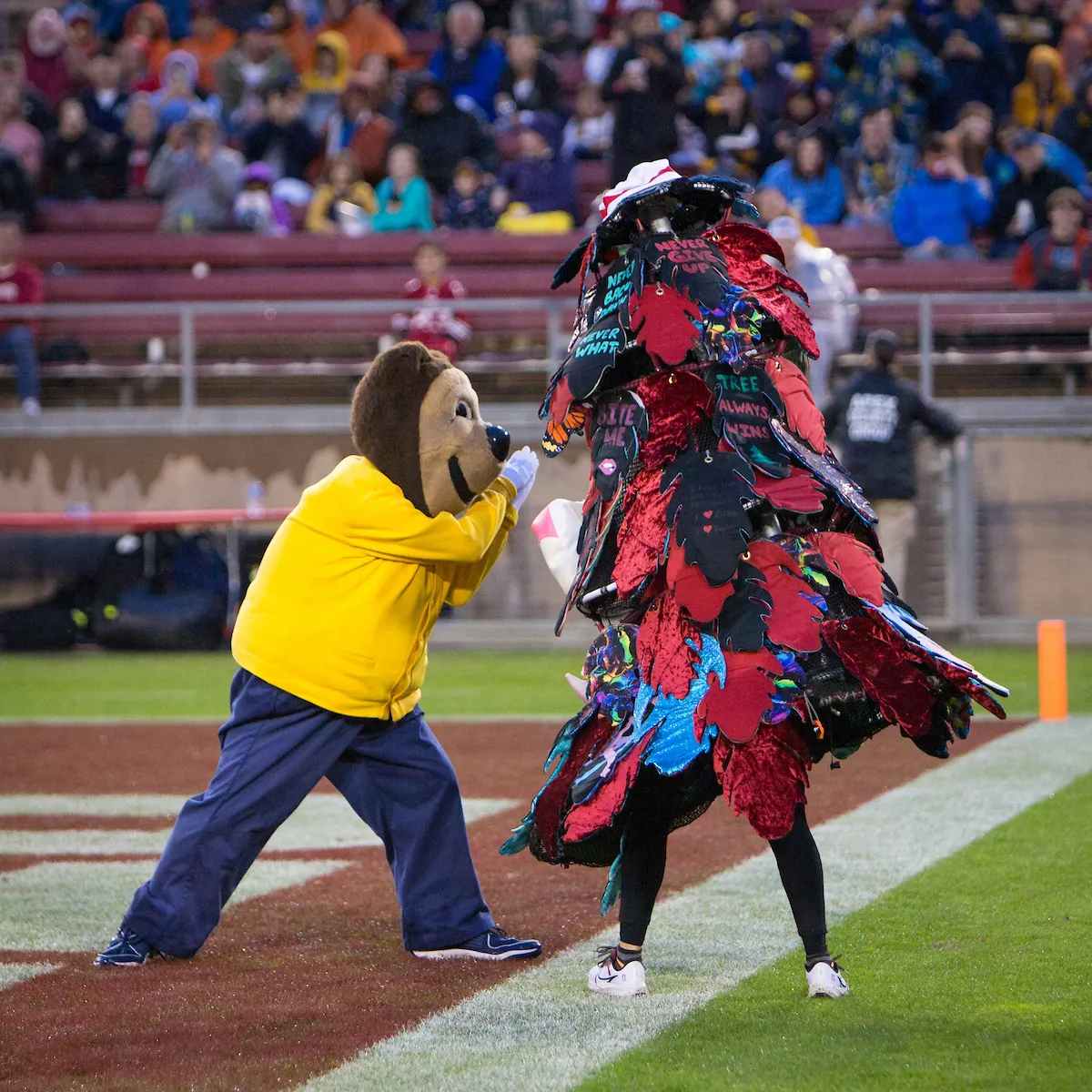The inspiration for the first Big Game came from none other than former U.S. President Herbert Hoover — then student manager of the Stanford football team — and his friend Herbert Lang, the student manager of the Cal football team.
On March 19, 1892, Stanford defeated Cal 14-10 in the inaugural matchup. Amusingly, the game started late because Hoover forgot the ball. With attendance doubling the printed tickets, both schools agreed to make it an annual tradition. The term “Big Game” became widely used in the early 1900s.
One of the darkest moments in Big Game history — and American sports history — was the Thanksgiving Day Disaster of 1900, the deadliest accident ever at a U.S. sporting event. The tragedy’s roots trace back to the 1897 Big Game, when a section of a roof collapsed under fans. Miraculously, no one was killed, and only one person required hospitalization.
In 1900, however, disaster struck when fans climbed onto the roof of a glassworks factory to watch the game. Early in the game, the roof gave way — unnoticed by the players — sending people plunging into the furnace and onto the ground below. The collapse claimed 23 lives, most of them children and young adults, and left over 100 others injured or maimed.
Moving forward in the Big Game timeline to 1906, both Stanford and Cal switched from football to rugby in order to reduce the sport’s violence, a decision mirrored by many West Coast teams over the following decade. From 1906 to 1914, all Big Games between Stanford and Cal were rugby matches.
However, in 1915, Cal returned to football, leading to an unusual arrangement: Cal played Washington in the Big Game for football, while Stanford faced Santa Clara University in rugby. This split continued until 1918, when Stanford switched back to football, reviving the traditional Big Game rivalry. Having been without a football team for 12 years, Stanford suffered a crushing 67-0 defeat to Cal in their first matchup.
No retelling of the story of Big Game is complete without discussing The Play — as the events at the end of the 1982 game came to be known. In a nail-biter featuring future Hall of Famer and Super Bowl champion John Elway as Stanford’s quarterback, Stanford led 20-19 after kicking a field goal with just four seconds remaining. However, an unsportsman-like conduct penalty on Stanford pushed back their subsequent kickoff, setting the stage for Cal’s miraculous finish.
Needing a miracle, Cal players executed a series of laterals — passing the ball sideways to teammates to avoid being tackled. During one of the laterals, the Stanford sideline mistakenly believed a Cal player had been tackled with the ball, prompting the Stanford band to rush onto the field to celebrate their presumed victory. The final Cal player to possess the ball rushed the final twenty yards to a touchdown, weaving through the Stanford band, and colliding with a trombone player in the end zone.
As referee Charles Moffett recalled years later, “When I raised my arms [to signal the touchdown], I thought I had started World War III. It was like an atomic bomb had gone off.”
Stanford would get their revenge eight years later with “The Payback.” Down by one point after scoring a touchdown, Stanford successfully recovered an onside kick inside Cal territory, then took advantage of a Cal roughing the passer penalty to kick a walk-off field goal.
Between 2010 and 2018, Stanford dominated the Big Game, winning every matchup during that span. A key contributor to this streak was running back Christian McCaffrey ’16, who is now a star for the San Francisco 49ers. In the 2015 season, McCaffrey’s sophomore year, he shattered several Stanford rushing records while leading the Cardinal to a 35-22 victory over Cal and a third-place national ranking — the program’s highest in 75 years. The following year, McCaffrey led the nation in all-purpose yards per game as Stanford’s high-powered offense scored 45 points in yet another win over Cal.
Going into the 127th Big Game, Stanford has lost four of the last five matchups but nevertheless maintains a 66-53-11 record overall. While most of those losses were by one score, the Cardinal endured a humiliating 41-11 defeat in 2021. Stanford has yet to return to its McCaffrey-era dominance in the Big Game. Regardless of whether they reclaim the iconic Stanford Axe, this matchup will continue one of the oldest and most storied rivalries in football history.
